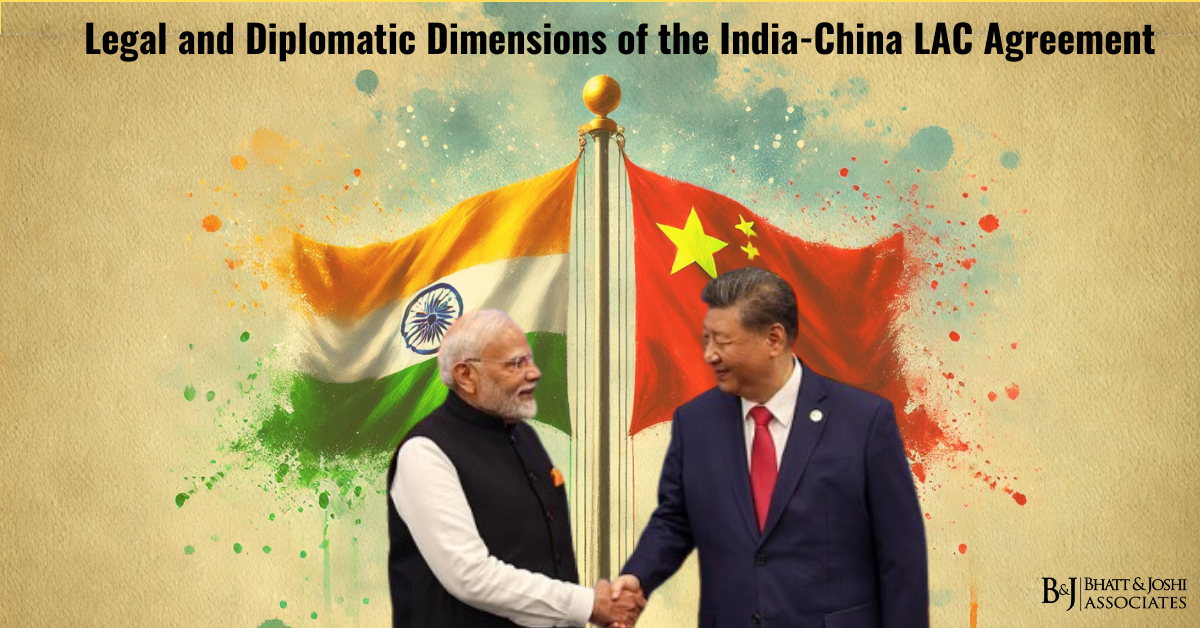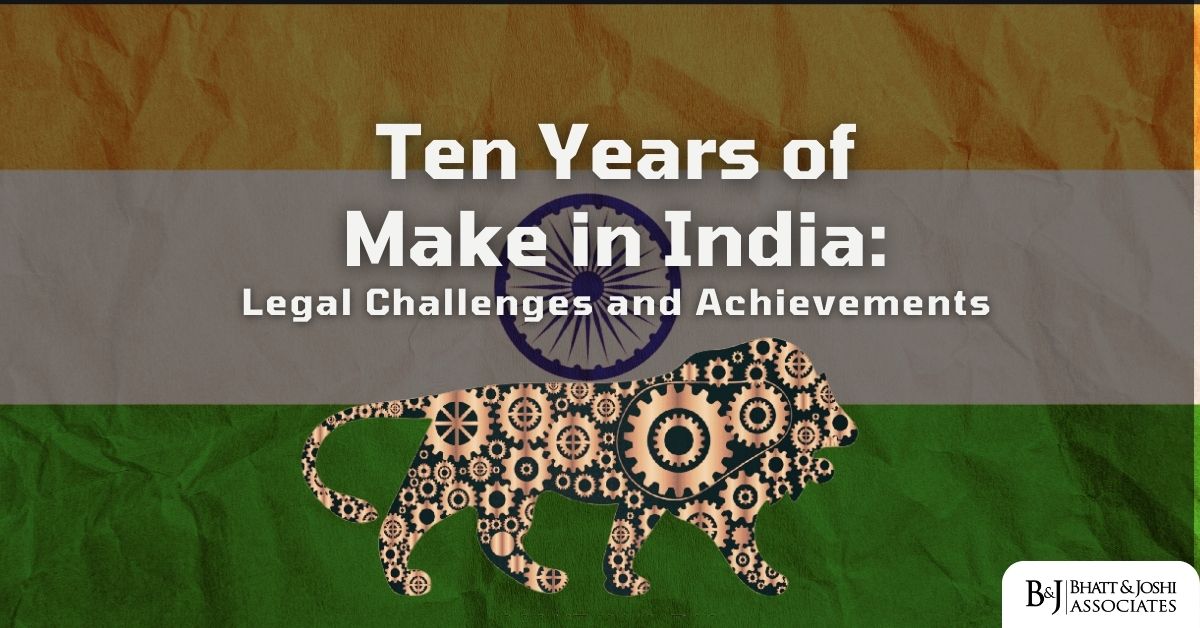Introduction
The ties linking India and China are multifaceted owing to aspects of cooperation, competition, and even hostility. One of the most contentious issues fueling their relations is the boundary known as the Line of Actual Control (LAC), which has always been and continues to be an unstable border. The legal and diplomatic aspects of the India-China LAC Agreement help explain the region’s peace and stability. In this article, we look at the history, the legal aspects of the LAC, the diplomacy surrounding this sensitive border issue, and important supporting case law and judgments alongside an analysis of overarching consequences.
Historical Roots of the India-China LAC Dispute
The LAC’s origins are traced back to British colonial rule in India. The border division between India and Tibet (the latter being under Chinese suzerainty at the time) was never explicitly marked. Multiple treaties and agreements, including the 1914 Treaty of Simla, attempted to resolve this issue but ultimately failed to find a permanent solution. When India gained independence in 1947 and the People’s Republic of China (PRC) was established in 1949, both countries inherited these problems.
China annexed the Tibet region in 1950 and this escalated the problem as both countries were now directly bordering each other. China gaining control over Aksai Chin during the Sino-Indian War of 1962 further complicated the dispute as India now claimed Aksai Chin as Ladakh. After the war, the LAC emerged as an unofficial boundary that separated territories of China and India. While the India-China LAC Agreement aimed to maintain peace along the border, differing perceptions of the LAC continue to fuel disputes. However, the denial to accept each other’s claim and mark the territorial boundaries has put the region in a constant state of turmoil. Such historical problems have been pivotal in determining the policies and attitude of the people from both sides, therefore, resulting in a chronic state of suspicion.
Legal Frameworks Governing the LAC
The legal parameters of the LAC are informed by, domestic laws, bilateral treaties, and international standards. China and India have had multiple peace and tranquillity agreements along the LAC, even in the absence of formally agreed boundaries. All these agreements and arrangements regulate relations on the contested frontier and serve as the foundation for boundary dispute diplomacy.
Bilateral Agreements
The bilateral agreements of China and India form the backbone of the legal structure of the LAC. The first of such major agreements was signed in 1993 and is known as the Agreement on the Maintenance of Peace and Tranquility along the LAC. It called for mutual recognition of the LAC as well as military non-escalation. Both sides, in turn, agreed to settle conflicts within the bounds of the existing situation and not escalate into violence. The agreement offered a legal basis for managing the boundary and was recognized as a milestone in reducing hostile relations.
In furtherance of the above, the 1996 Agreement on Confidence-Building Measures (CBMs) imposed restrictions on military movements and the use of weapons within the vicinity of the LAC. this agreement aimed at establishing a regime of confidence and safety that would minimize the risks of inadvertent escalation. Additional refinements were introduced with the 2005 Protocol on Modalities for the Implementation of CBMs which prescribed specific measures for the management of the border and the prevention of confrontational situations.
Yet another major step was taken in 2013 with the signing of the Border Defence Cooperation Agreement (BDCA) which greatly improved the communication channels of the armed forces of both countries. It paid special attention to dealing with border misunderstandings and incidents promptly. At the same time, the limits of these agreements became clear during the clash in Galwan Valley in 2020 that led to the formulation of the Five-Point Consensus. After elaborate rounds of diplomatic discussions, the consensus formulation placed the highest priority on ceasefire and de-escalation as the first steps to restoring peace.
International Legal Principles
As with bilateral treaties, the LAC matter involves some aspects of international law too. The argument for India’s claim over certain territories earache from British India draws on the principle of uti possidetis juris which states that the borders of a colony are assumed to be governed by the newly attained independent power’s jurisdiction. This principle justifies the notion of `modern state borders` being established on the `colonial state borders` which were drawn without any treaties being assigned.
India is legally bound by its treaty obligations under the principle of pacta sunt servanda, which is concerned with honouring treaties, especially about China despite the growing conflicts. To further solidify the legal aspects of the India-China LAC agreement, the principles of customary international law, which include non-violence and peaceful conduct in any form of conflict, should be also noted. All these concepts are considered to be the essence of premises to the boundary controversy while respecting world regulations.
Diplomatic Dimensions of the LAC: India-China Relations
Diplomatic efforts have been a cornerstone of managing the India-China boundary dispute. Both nations have engaged in high-level dialogues, working groups, and summits to address the complexities of the LAC. Despite setbacks, diplomacy remains a vital tool for navigating the challenges posed by the LAC.
Special Representatives Mechanism
The initiation of the Special Representations Mechanism in 2003 was a landmark event in bilateral relations. This mechanism enabled the two sides to set up higher-level talks aimed at boundary discussions. Over the years it has enabled several rounds of talks on confidence-building measures and attempts to reach a terminal boundary settlement. Progress, however, is usually slow due to the animosity and different focus areas of the two countries’ long-lasting issues.
High-Level Summits
The high-level summits have been crucial in dealing with the LAC problem. The informal summits at Wuhan in 2018 and Mamallapuram in 2019 highlighted the need for personal diplomacy between Indian and Chinese heads. While these summits did little to resolve the LAC issues, they did emphasize the importance of dialogue and the need for further interactions to understand each other’s perspectives better.
Role of Multilateral Forums
India and China have also engaged in multilateral forums such as BRICS, the Shanghai Cooperation Organization (SCO), and the United Nations to manage their bilateral issues in a broader context. These platforms provide opportunities for dialogue and emphasize the importance of regional stability. While multilateral forums cannot directly resolve the LAC issue, they contribute to building trust and facilitating cooperation on shared interests.
Case Laws and Judicial Interpretations
While the LAC issue is primarily a matter of international diplomacy, Indian courts have occasionally addressed related aspects, particularly in the context of national security and constitutional law. These cases provide insights into the legal frameworks governing sensitive border regions and highlight the intersection of law and policy.
A.K. Gopalan v. State of Madras (1950)
Although not directly related to the LAC, this landmark case established the principle that national security considerations could justify certain restrictions on individual rights. This principle has been invoked in the context of border management and defense preparedness, emphasizing the balance between security and civil liberties.
Naga People’s Movement of Human Rights v. Union of India (1997)
This case upheld the constitutional validity of the Armed Forces (Special Powers) Act (AFSPA), highlighting the legal complexities of operating in sensitive border regions. The AFSPA has been enforced in areas close to the LAC, particularly in Arunachal Pradesh and Jammu & Kashmir. This judgment underscores the challenges of maintaining security while ensuring adherence to constitutional principles.
Recent PILs and Judgments
In recent years, public interest litigations (PILs) have been filed in Indian courts seeking greater transparency in LAC-related policies and expenditures. Courts have generally deferred to the executive, citing the sensitive nature of border disputes. This judicial restraint reflects the complexities of addressing national security issues through legal mechanisms.
Key Incidents and Their Legal Implications
Doklam Standoff (2017)
The standoff at Doklam was marked by violence and took 73 days to resolve. It revealed the inadequacies of diplomatic settlements and laws regarding the border dispute between India and China. Although it did not take place on the Line of Actual Control (LAC), the standoff illustrated the need for strong agreements in that region. Moreover, the incident emphasized the gaps in the existing systems and the shift to more robust border control systems.
The Galwan Valley Clash (2020)
The clash in the deadly Galwan Valley was a watershed moment for India-China relations which led to a significant decline. It also pointed out loopholes in the current settlements which called for more treaties and their enforcement. This incident demonstrated the relative instability of the LAC as well as the need to deal with deeper problems that exist underneath.
Spatial conflicts concerning Arunachal Pradesh
Arunachal Pradesh continues to be a disputed territory with a border claimed by multiple sovereign nations because of China’s continuous marking of it as “South Tibet.” China’s position is diminished by the fact that ethnically, politically, and legally, Arunachal Pradesh is completely Indian, strengthened by the principle of uti possidetis juris and the democratic expression of will of the people of Arunachal. These conflicts put in the spotlight the disparities of old wounds and the real contemporary world.
Challenges and the Way Forward
Despite the India-China LAC Agreement and subsequent dialogues, the border remains a flashpoint due to unresolved territorial claims. Several challenges impede progress, including ambiguities in the LAC, geopolitical rivalry, and domestic pressures. Addressing these challenges requires a multifaceted approach that combines legal, diplomatic, and strategic initiatives.
Strengthening existing agreements by incorporating enforcement mechanisms and third-party verification is a critical step. Enhancing communication channels to prevent misunderstandings and leveraging multilateral platforms to build trust are equally important. Encouraging people-to-people exchanges can also foster mutual understanding and reduce tensions.
Conclusion: Resolving the India-China LAC Conflict
The legal and diplomatic aspects of the India-China LAC Agreement highlight the challenges posed by one of the world’s most volatile border regions. Substantial strides have been achieved via bilateral agreements and diplomatic interactions; however, a considerable amount of work is still pending. A long-term solution calls for persistent efforts towards dialogue, compliance with legal standards, and the resolution of more profound geopolitical and internal issues. With India and China emerging more prominently on the world stage, resolving the LAC dispute will be crucial for the stability of the region, and the globe as a whole.














